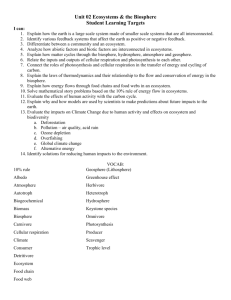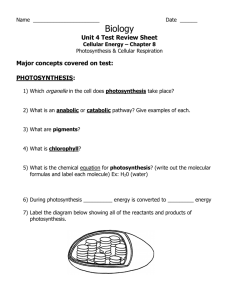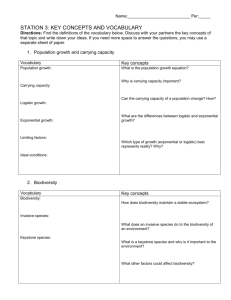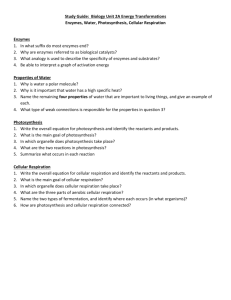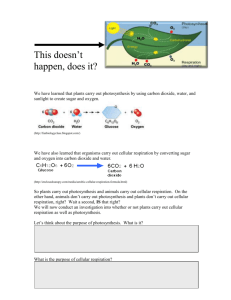Name: H Bio Semester 2 Final Exam Study Guide **EXTRA CREDIT
advertisement
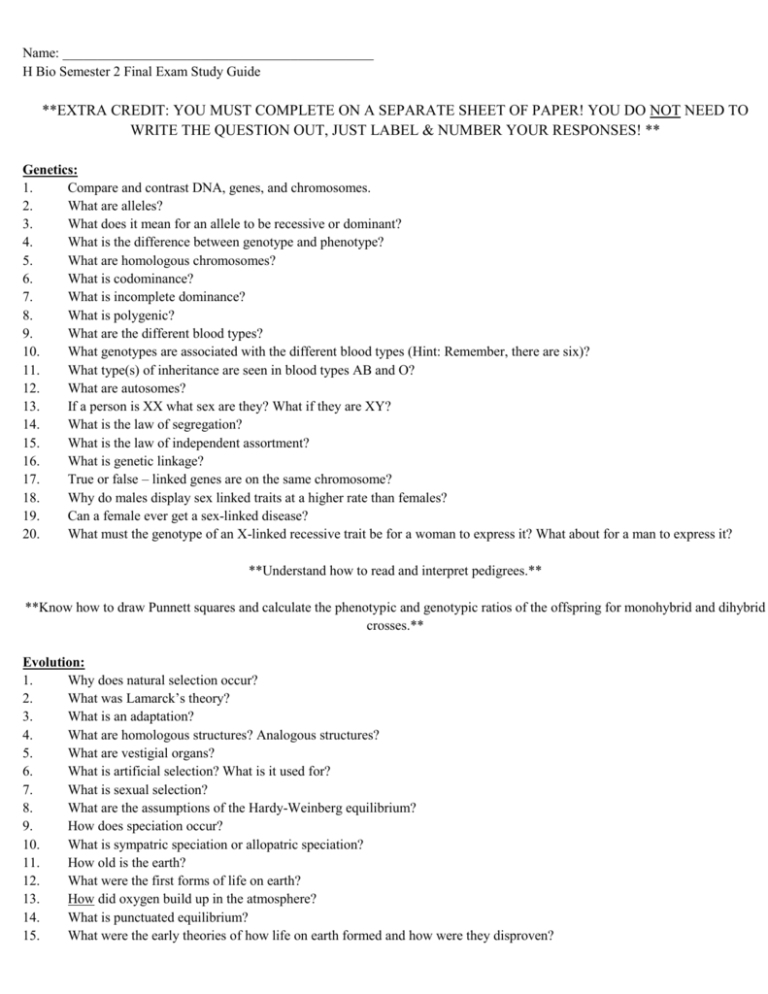
Name: _____________________________________________ H Bio Semester 2 Final Exam Study Guide **EXTRA CREDIT: YOU MUST COMPLETE ON A SEPARATE SHEET OF PAPER! YOU DO NOT NEED TO WRITE THE QUESTION OUT, JUST LABEL & NUMBER YOUR RESPONSES! ** Genetics: 1. Compare and contrast DNA, genes, and chromosomes. 2. What are alleles? 3. What does it mean for an allele to be recessive or dominant? 4. What is the difference between genotype and phenotype? 5. What are homologous chromosomes? 6. What is codominance? 7. What is incomplete dominance? 8. What is polygenic? 9. What are the different blood types? 10. What genotypes are associated with the different blood types (Hint: Remember, there are six)? 11. What type(s) of inheritance are seen in blood types AB and O? 12. What are autosomes? 13. If a person is XX what sex are they? What if they are XY? 14. What is the law of segregation? 15. What is the law of independent assortment? 16. What is genetic linkage? 17. True or false – linked genes are on the same chromosome? 18. Why do males display sex linked traits at a higher rate than females? 19. Can a female ever get a sex-linked disease? 20. What must the genotype of an X-linked recessive trait be for a woman to express it? What about for a man to express it? **Understand how to read and interpret pedigrees.** **Know how to draw Punnett squares and calculate the phenotypic and genotypic ratios of the offspring for monohybrid and dihybrid crosses.** Evolution: 1. Why does natural selection occur? 2. What was Lamarck’s theory? 3. What is an adaptation? 4. What are homologous structures? Analogous structures? 5. What are vestigial organs? 6. What is artificial selection? What is it used for? 7. What is sexual selection? 8. What are the assumptions of the Hardy-Weinberg equilibrium? 9. How does speciation occur? 10. What is sympatric speciation or allopatric speciation? 11. How old is the earth? 12. What were the first forms of life on earth? 13. How did oxygen build up in the atmosphere? 14. What is punctuated equilibrium? 15. What were the early theories of how life on earth formed and how were they disproven? 16. 17. 18. 19. 20. 21. What does biogenesis mean? What are fossils used for? What may cause a mass extinction? How do you determine the absolute age of a rock? What is radioactive dating? Where on earth is evidence for the earliest hominids found? Photosynthesis and Cellular Respiration: 1. What is a biochemical pathway? 2. What is cellular respiration? What organisms perform cellular respiration? 3. What is the main energy currency for cells? 4. What is photosynthesis? What organisms perform photosynthesis? 5. Where does photosynthesis occur? 6. Where does cellular respiration occur? 7. What are pigments? 8. What happens when light strikes chlorophyll? 9. What steps are involved in the light reactions? 10. What are the steps involved in the dark reactions? 11. What is the electron transport chain? 12. What are the equations for cellular respiration and photosynthesis? 13. What happens when the body lacks sufficient oxygen to perform cellular respiration? 14. What are the products and reactants of each step of photosynthesis? 15. What are the products and reactants of each step of cellular respiration? How much ATP is made in each step? Ecology: 1. What defines a biome? 2. Explain the organizational levels of an ecosystem (individual, population, community…etc). 3. What organization levels contain biotic factors, abiotic factors, and/or both? 3. Explain the energy flow in an ecosystem. 4. From where does the energy originate? **Be able to draw and read a food chain.** 5. Which organisms comprise the greatest biomass? Which comprise the least? 6. Give an example of each type of symbiotic relationship. 7. What are: autotrophs, heterotrophs, herbivores, carnivores, omnivores, decomposers? 8. What are factors that affect population size in an ecosystem? 9. How much energy is passed between trophic levels? What happens to the rest of the energy? 10. What are the density-dependent limiting factors in an ecosystem? 11. What is primary succession? 12. What is secondary succession? 13. How are primary and secondary succession different? **Know and be able to explain the nitrogen, carbon and water cycles.** 14. What is global warming? 15. What happens to the concentration of toxins as they move up the food chain? 16. What is a niche?






